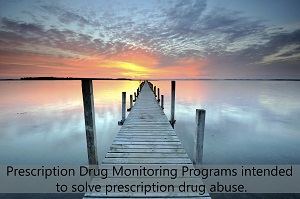A mention of psychedelic drugs may bring to mind the free living of the 1960s. Images surface of a time gone by, when experimentation was new to many young people and celebrated by some groups.
However, a new study shows that this perception may not match the reality. Far from being a time gone by, the study provides evidence that psychedelic drug use is no relic from the ‘60s. It is, instead, a common practice that ranges from experimentation to religious ritual.
The study, authored by Teri S. Krebs and Pal-Orjan Jansen of the Department of Neuroscience at Norwegian University of Science and Technology, relied on data from over 57,000 respondents. The findings are published under the title “Over 30 million psychedelic users in the United States.”
The study authors utilized results from the 2010 National Survey on Drug Use and Health, a function of the Substance Abuse and Mental Health Services Administration. The study used telephone surveys, asking individuals 12 years and older about their drug use and other health-related topics.
The analysis showed that an estimated 32 million individuals in the United States have tried LSD, psilocybin (“magic mushrooms”), or mescaline (peyote and other types of cacti). Between the ages of 21 and 64, 17 percent of individuals have tried these drugs.
The age group where the largest concentration of psychedelic drug users was found was in the 30 to 34 age group. In this age range, 26 percent of males and 15 percent of females had tried some form of psychedelic drug.
 The researchers explain that the rate of lifetime psychedelic drug use has not changed significantly in the decades since the ‘60s. The drugs continue to be widely used. However, there are several aspects of psychedelic drugs that make them different than other drugs.
The researchers explain that the rate of lifetime psychedelic drug use has not changed significantly in the decades since the ‘60s. The drugs continue to be widely used. However, there are several aspects of psychedelic drugs that make them different than other drugs.
The effects of the drugs, the way they work in the body, and the risks associated with them are clearly distinguishable from other drugs. They do not carry a risk of physical harm, they don’t lead to addiction and experts generally believe them to be less risky than alcohol or other types of drugs.
Psychedelic drugs, however, can cause anxiety and an experience of confusion.
The study authors note that older adults were more likely to have a lifetime history of LSD or mescaline use, while younger adults seemed to be more attracted to the use of “magic mushrooms.” The use of the mushrooms has been shown to have increased during the years since the 1970s.
The drugs are often sought for their reportedly mystical effects. The use of plants with psychedelic effects for such purposes has been traced as far back as 5,000 years.
To understand the effects of psychedelic drugs on humans further – read:
New Research Opens Door For Directly Understanding Effects of Psychedelics on Humans
Prescription Drug Monitoring Programs (PDMPs) have been implemented in almost every state and they offer new hope in the fight against the prescription drug abuse epidemic. However, with underfunding and some objections from doctors being raised, the effectiveness of the virtually nationwide approach is yet to be established. It’s touted as a solution to the problem of “doctor shopping” and as a useful approach in curbing prescription drug abuse on the whole, but addiction is a complex issue to tackle. Finding out about the programs, the problems they intend to solve, and the potential issues with the approach helps you understand what states across the country are doing to combat the epidemic.

Prescription Drug Abuse Statistics
According the National Institute on Drug Abuse, 7 million Americans used prescription drugs non-medically in 2010. The most common type of drugs abused is opioid analgesics like Vicodin, which are basically narcotic painkillers related to heroin. Other substances, such as amphetamine-like stimulants and tranquilizers, which treat anxiety, are also widely abused across the country. A report in the Los Angeles Times reveals that deaths from drug overdoses have increased for the eleventh consecutive year. The problem is believed to stem from the relative availability of prescription medicines and their reputation as “safe,” combined with the addictive nature of the substances.
Doctor Shopping
Doctor shopping is the practice of going to numerous doctors for prescriptions of narcotic medications to get more pills. It’s already outlawed according to general fraud, subterfuge, and deceit laws across virtually all states, but actually identifying it is extremely challenging without a centralized database. As a doctor, you have no way of knowing if a patient coming into your practice has already gotten another prescription from somebody else, unless each prescription is registered. The relative ease of doctor shopping means that some people are able to obtain vast quantities of narcotic medicines and then sell them for others to abuse.
PDMPs
This is why prescription monitoring programs were set up. They focus on potentially addictive drugs such as OxyContin, Adderall, Valium and Vicodin, and can be thought of as central databases for doctors to record their prescriptions. Before issuing a prescription, doctors check the database to determine whether the individual has been prescribed the drugs before or should already have a sufficient supply. The benefits of this are immediately obvious: not only will it prevent doctor shopping; it will also help to identify individuals who may be addicted to prescription drugs. Federal funding is available, which has driven the overwhelming majority of states to set up their own programs.
The programs have been widely adopted across the US, with states such as Wisconsin and Florida recently passing bills and implementing PDMPs. Now, only Missouri lacks a program, after the bill was defeated in 2012. Despite problems with the functionality of the databases and some funding issues, doctors in places such as San Diego have eagerly registered for the programs.
Problems With the Approach
Despite the positive outlook for prescription monitoring programs across the country, there are some potential issues with the strategy. The main one is the privacy, which was cited as a reason the idea isn’t being well received in Missouri. Essentially, confidential medical information is being placed onto a widely accessible database. Although the databases can only be accessed by medical professionals and pharmacists, there is an obvious concern about patient privacy.
Whether this fairly trivial intrusion into personal privacy is warranted by the scale of the prescription drug problem in the U.S. is open to debate, but ultimately doctors and pharmacists have the same information for their regular patients anyway.
Doctors have raised some more practical and defensible issues, though. One such criticism is that the databases are extremely time-consuming. Consulting a database before prescriptions are given and then recording any prescriptions takes time (particularly if there are server issues or problems with the functionality of the database), and this could impact the number of patients they could see.
Conclusion
Prescription monitoring programs will not prevent people from abusing prescription medicines. Patients will still often receive too many pills for their pain and later give in to the temptation of recreational use or give them to friends to do the same. However, the databases will do wonders to reduce the amount of prescription drugs available for people to abuse. Doctor shopping isn’t the whole problem, but it is a significant contributor, and the monitoring programs are exceptionally well-equipped to curb the practice. In this way, it’s a vital step toward reducing the shocking numbers of deaths each year from prescription drug overdoses, and something that should be welcomed with open arms.
06 May 2013
The Battle Over Legalizing Marijuana Continues
Marijuana continues to be in the headlines after legalization in Washington and Colorado, Obama’s references to whether or not his administration will pursue those who violate the federal laws against its use and the latest ruling by an appeals court to reject the change in classification for the drug are top news headlines.
Despite efforts by those who believe the drug is safe for medicinal and even recreational use, the DEA believes it still has a high potential for abuse and therefore the classification that it currently has no acceptable medical use stays in place. As a result, marijuana will continue to be treated by the federal government as a drug akin to LSD and heroin.
 While those battling the drug war on the home front appear to be satisfied with the ruling, those who wish to conduct research believe their hands remain tied. According a recent ABC News report, the restrictions meant to protect the people are the very restrictions that make it difficult to perform the necessary studies to convince the DEA that the drug should be moved into a different category.
While those battling the drug war on the home front appear to be satisfied with the ruling, those who wish to conduct research believe their hands remain tied. According a recent ABC News report, the restrictions meant to protect the people are the very restrictions that make it difficult to perform the necessary studies to convince the DEA that the drug should be moved into a different category.
Essentially, the DEA wants FDA approval before removing marijuana from Schedule I classification. The research that the FDA needs completed to be able to provide approval cannot be conducted because of the current laws in place. The argument was made by the Drug Policy Alliance, suggesting that the federal government is responsible for blocking the research that needs to be completed.
While a number of studies have been completed or are underway, the biggest obstacle observed by opponents to the DEA classification is the fact that the studies must have FDA approval before they can begin. This is perceived by many to be a conflict of interest.
Read More About The Pros And Cons Of Legalizing Recreational Marijuana
Non-Christians think A.A. is a Christian organization and Christians question whether A.A. can be compatible with Christian theology. Is A.A. Christian, anti-Christian, or none of the above?
 The answers to these questions come from A.A.’s early history. Several of the founders of A.A. would have labeled themselves Christians and as they developed the 12 Steps, they drew heavily on the teachings of the Oxford Group, a Christian organization that had developed practical steps for living. The founders saw that these principles were universal and that they could be applied to finding a solution for alcoholism. Before there was a Big Book, meetings and devotions were often based on Scripture from the New Testament. Does this mean A.A. is a Christian organization? Not exactly.
The answers to these questions come from A.A.’s early history. Several of the founders of A.A. would have labeled themselves Christians and as they developed the 12 Steps, they drew heavily on the teachings of the Oxford Group, a Christian organization that had developed practical steps for living. The founders saw that these principles were universal and that they could be applied to finding a solution for alcoholism. Before there was a Big Book, meetings and devotions were often based on Scripture from the New Testament. Does this mean A.A. is a Christian organization? Not exactly.
While A.A. has roots in the Christian tradition, it was decided by the group that A.A. would be of greatest benefit to the masses of suffering alcoholics if it did not establish a religious foundation or affiliation. Having seen the sectarianism that has the power to dismantle even the best intentioned of organizations and groups, the founders elected to develop a program that was based on universal principles without a specifically Christian bent. Though these principles are often detected within the pages of the Bible, they are also elements of many world religions.
While the development of faith in a Higher Power is a necessary element for the working of the 12 Steps, the A.A. literature does not define the identity of this God. Christians will naturally define their Higher Power as the Trinitarian God and they are free to do so. But adherents of other faiths are also welcome to define their Higher Power in accordance with their own doctrine. Those who come to the group as atheists or agnostics are encouraged, initially at least, to see the group as a power greater than themselves and to put their trust in that.
“Beyond a Higher Power, as each of us may envision Him, A.A. must never, as a society, enter the field of dogma or theology. We can never become a religion in that sense, lest we kill our usefulness by getting bogged down in theological contention.” (Bill W., Letter, 1954)
The purpose of this approach was not to diminish the Christian faith or to promote universalism or polytheism. The aim was to open the door wide to those who were dying in their alcoholism and desperately in need of a solution. Rightly, the founders understood that many of those sufferers were non-Christians and non-religious. They knew that placing a Christian label on the organization would shut the door on untold numbers of alcoholics who wanted help but didn’t want church.
The founders also realized the destructive power of sectarianism and denominationalism. Theological arguments and doctrinal differences would naturally arise and they believed that A.A. was not to be the forum for these debates. A.A. was a program with a spiritual foundation—there was no way around that. But how that spirituality was to be defined was up to the individual addict.
Today the 12-Step groups adhere to this principle of religious non-affiliation. The door is open to people of all faiths. Though many find God or become Christians through the program, they would likely never have gone so far as to enter a meeting if they thought this faith was a requirement for membership.
“While A.A. has restored thousands of poor Christians to their churches, and has made believers out of atheists and agnostics, it has also made good A.A.’s out of those belonging to the Buddhist, Islamic, and Jewish faiths. For example, we question very much whether our Buddhist members in Japan would have ever joined this Society had A.A. officially stamped itself a strictly Christian movement.
You can easily convince yourself of this by imagining that A.A. started among the Buddhists and that they then told you you couldn’t join them unless you became a Buddhist, too. If you were a Christian alcoholic under these circumstances, you might well turn your face to the wall and die.” (Bill W., Letter, 1954)
Peer groups for addiction and alcoholism are an integral part of the healing and recovery process. These assemblies of the hopeful can be extraordinarily effective at facilitating constructive interactions between people who are attempting to make a successful transition from sickness to health. Recovery from addiction is hard and challenging work, and the advice and support that substance abusers receive from their peers in support groups can be valuable beyond measure.
 Or at least, this is how it should be. Unfortunately, peer groups are no different than any other type of self-organized entity in that they can be highly effective or completely dysfunctional depending on the quality of the input of the participants. Ultimately, those who attend peer support groups must put in a real effort to make sure these self-organized healing-centered associations deliver on their promise to assist, and without this type of care and concern a peer group may come nowhere close to living up to its potential as a force for good.
Or at least, this is how it should be. Unfortunately, peer groups are no different than any other type of self-organized entity in that they can be highly effective or completely dysfunctional depending on the quality of the input of the participants. Ultimately, those who attend peer support groups must put in a real effort to make sure these self-organized healing-centered associations deliver on their promise to assist, and without this type of care and concern a peer group may come nowhere close to living up to its potential as a force for good.
A lot of the responsibility for the quality of the peer group experience obviously falls on the shoulders of the group leader, who must use his education and experience to help steer discussions in a positive direction. But while a good leader has great influence, if the members of a peer group don’t hold up their end of the bargain, even the best leader will not be able to organize an assemblage that rises above the mediocre. The voluntary relationships that the members establish among themselves are the lifeblood of all peer support groups, and it is vital that recovering addicts and alcoholics who attend group meetings work hard to make these gatherings productive and enlightening for all.
To some extent this burden may seem a little unfair; after all, addicts in the early stages of recovery already have a lot on their plates, and asking them to take on the added responsibility of helping to ensure that peer support groups are run effectively may seem like a bit much. But passivity is not synonymous with recovery from chemical dependency, and anyone who is serious about overcoming a drug or alcohol problem should be ready to take an active role in his or her project of redemption at each step along the path. If a peer group is only as good as its members – and this truism is as rock-solid as they come – then each of those members must be prepared to expend effort and energy to facilitate the recovery process, for their own good as well as the good of their fellow addicts.
So what characteristics make a good peer support group member? There are many possible answers to this question, but the analysis of peer group dynamics that follows should provide some useful guidance for those seeking insight.
Recognizing and Respecting Boundaries and Communication Styles
Addicts and alcoholics in peer support groups share a common problem, but nevertheless each is a profoundly unique human being whose differences must be recognized and acknowledged. Human individuality is the main reason listening skills are just as important in communication as speaking skills, and peer group members should concentrate very closely on what their fellow group members are saying so that they can respond appropriately and constructively to what they are hearing—presume nothing but hear everything, this should be the credo of all peer support group members when dealing with their fellow recovering addicts.
But to gain real insight, it is also important to hear what people are not saying—while some people are comfortable speaking about their lives and their problems in public others are far more reserved and reticent, and everyone’s preferences and styles should be understood and respected. In ways that are sometimes subtle and sometimes obvious, each and every person in a peer support group will let the others know when they are ready to talk, how much information they are willing to disclose, and how much honest feedback they are comfortable receiving. Good peer group members realize this, they pay attention to the signs, and they adjust their interactions with their fellow recovering addicts and alcoholics accordingly.
The Power of the Practical
Recovering substance abusers attend group meetings hoping to find support and understanding, but they are also looking for practical advice to help them cope with the pitfalls and temptations they will inevitably face as they travel the path to sobriety. Whether their useful knowledge has been gained through wise analysis or trial-and-error, most recovering addicts have discovered strategies and techniques that have helped them make it through the rough times, and their “stories of the road” can be immensely helpful to others who will likely face, or are already facing, the same obstacles on their journey to good health. For the newly sober the possibility of relapse looms at every moment, and any ideas about how to handle cravings, overcome the depression that often accompanies withdrawal, or resist the triggers that can sabotage recovery in an instant can be extremely helpful.
In general, a positive attitude in the peer support group setting is highly recommended. But vague, pie-in-the-sky platitudes sound insincere and can actually interfere with the establishment of good relations between support group members. Hard-earned practical advice, on the other hand, will always be accepted with gratitude and appreciation.
The Grace of Acceptance
Giving good advice is wonderful, but accepting the suggestions and insights of others with good grace also helps to make the atmosphere in peer group sessions feel warm and inviting for all who come. When people feel free to share their thoughts about the situations others are experiencing, and when they know their efforts to help will be applauded, it enables them to connect more deeply with other recovering substance abusers and helps them open their hearts and minds to the guidance they will be offered by others in return. Regardless of whether the advice a particular person gives actually has the potential to help anyone else is irrelevant; just the fact that he or she feels comfortable speaking up and contributing is what matters the most.
Peer group members really do need each other, for validation as much as for anything else, and for this reason everyone who attends group meetings should give equal attention to all. Recovering addicts and alcoholics are searching desperately for a renewed sense of purpose, and having the chance to help others who are in a similar situation can help fill in the emotional and psychological gaps that will come to the forefront once drugs and alcohol are no longer around to provide their dubious compensations.
Following the Leader, and Letting the Leader Follow
As previously mentioned, group leaders play a vital role in managing and developing peer groups that actually work the way they are supposed to. But even though they are officially the ones in charge, group leaders still need all the help and support they can get. For example, peer group members who listen closely to what their leader says and ask questions or offer critiques can boost his or her efforts substantially, offering positive reinforcement to a message that may be of vital importance to everyone.
In peer groups, leaders are only as good as their followers. When recovering addicts and alcoholics are willing to support their leaders’ hard work by participating eagerly and attentively in the discussions they initiate, it sets a good precedent and encourages others to get more deeply involved as well.


